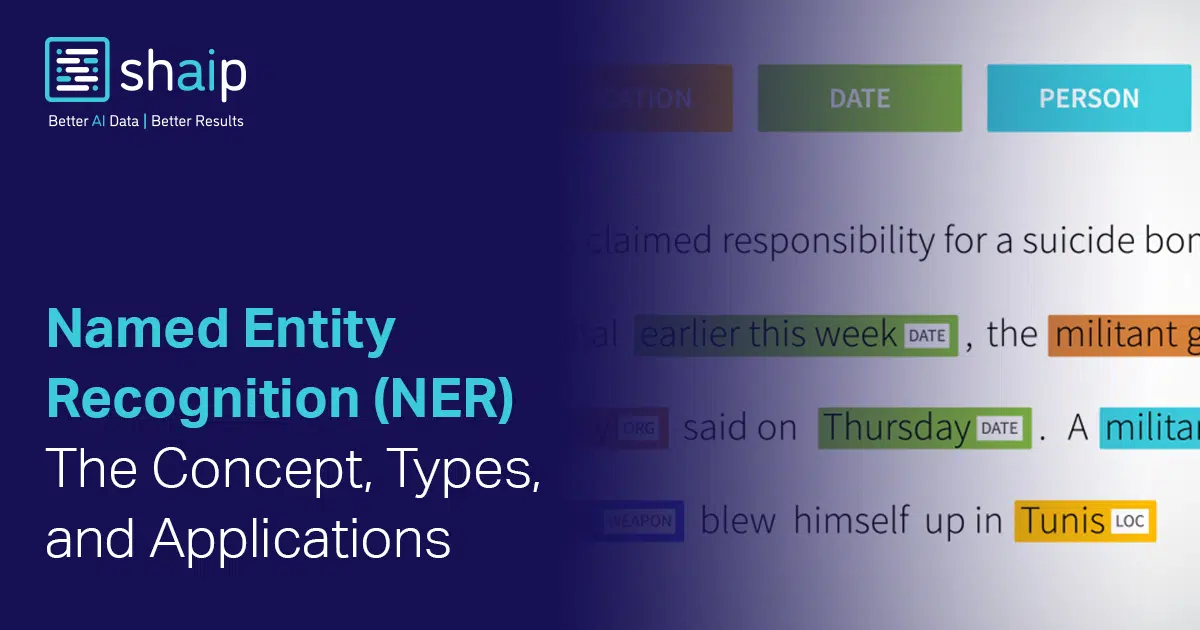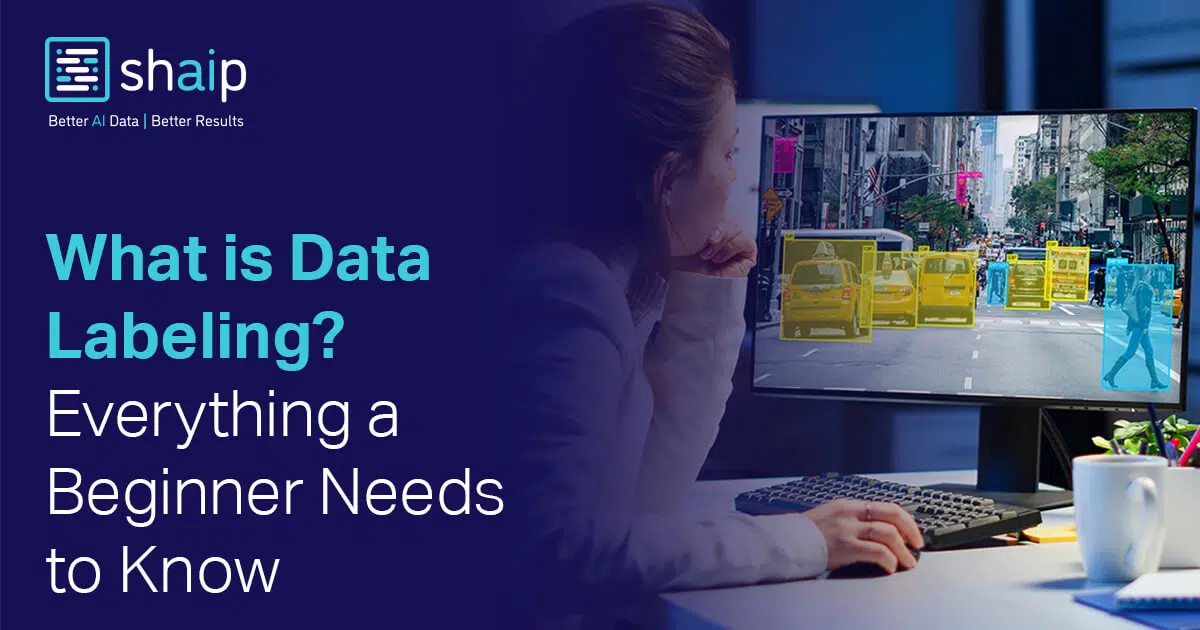Data Annotation for Healthcare AI
Unlock complex information in unstructured data with entity extraction and recognition
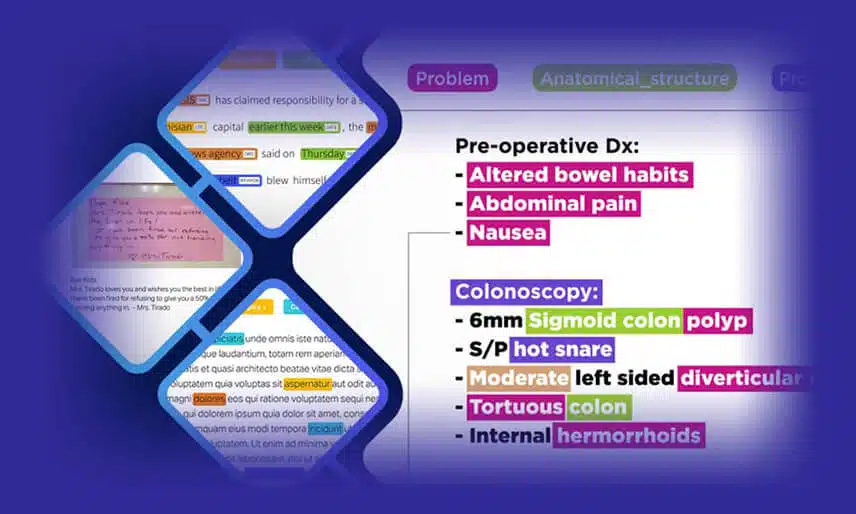
Featured Clients
Empowering teams to build world-leading AI products.

80% of data in the healthcare domain is unstructured, making it inaccessible. Accessing the data requires significant manual intervention, which limits the quantity of usable data. Understanding text in the medical domain requires a deep understanding of its terminology to unlock its potential. Shaip provides you the expertise to annotate healthcare data to improve AI engines at scale.
IDC, Analyst Firm:
The worldwide installed base of storage capacity will reach 11.7 zettabytes in 2023
IBM, Gartner & IDC:
80% of the data around the world is unstructured, making it obsolete and unusable.
Real-World Solution
Analyze data to discover meaningful insights to train NLP models with Medical Text Data Annotation
We offer Medical Data annotation services that help organizations extract critical information in unstructured medical data, i.e., Physician notes, EHR admission/discharge summaries, pathology reports, etc., that help machines to identify the clinical entities present in a given text or image. Our credentialed domain experts can help you deliver domain-specific insights – i.e., symptoms, disease, allergies, & medication, to help drive insights for care.
We also offer proprietary Medical NER APIs (pre-trained NLP models), which can auto-identify & classify the named entities presented in a text document. Medical NER APIs leverage proprietary knowledge graph, with 20M+ relationships & 1.7M+ clinical concepts
From data licensing, and collection, to data annotation, Shaip has got you covered.
- Annotation and preparation of medical images, videos, and texts, including radiography, ultrasound, mammography, CT scans, MRIs, and photon emission tomography
- Pharmaceutical and other healthcare use cases for natural language processing (NLP), including medical text categorization, named entity identification, text analysis, etc.
Medical Annotation Services
Our Medical Annotation services empower AI accuracy in healthcare. We meticulously label medical images, texts, and audio, using our expertise to train AI models. These models improve diagnostics, treatment planning, and patient care. Ensure high-quality, reliable data for advanced medical technology applications. Trust us to enhance your AI’s medical proficiency.
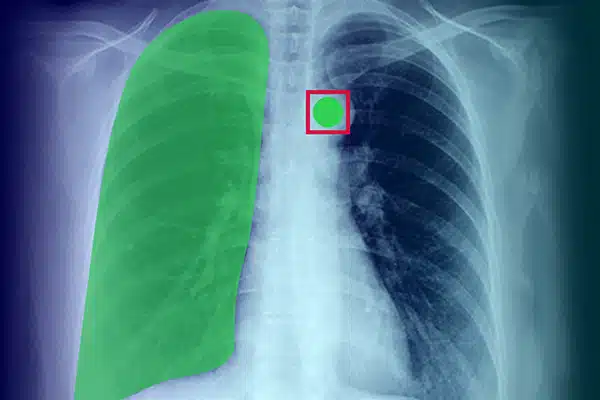
Image Annotation
Enhance medical AI by annotating visual data from X-rays, CT scans, and MRIs. Ensure AI models perform excellently in diagnostics and treatment, guided by expert data labeling. Get better patient outcomes with superior imaging insights.
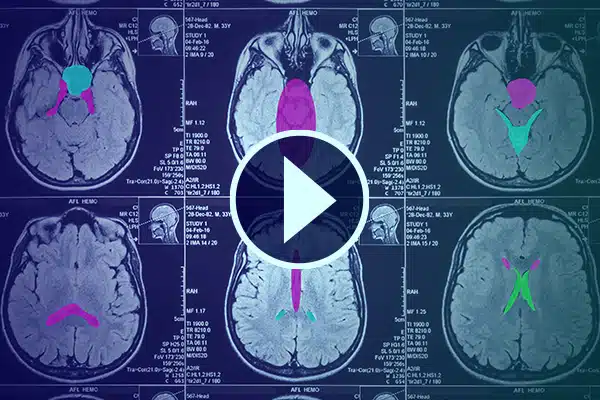
Video Annotation
Advance AI in healthcare with detailed video annotation. Sharpen AI learning with classifications and segmentations in medical footage. Improve your surgical AI and patient monitoring for improved healthcare delivery and diagnostics.
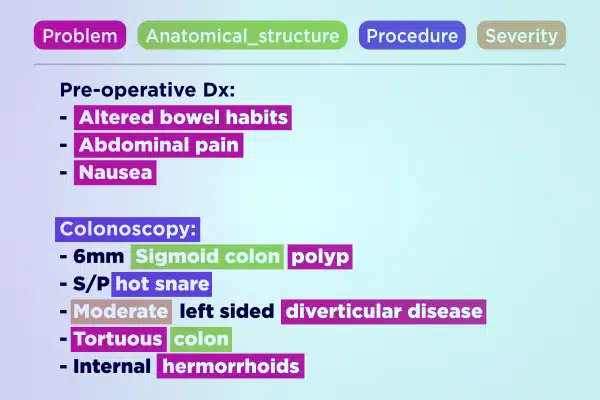
Text Annotation
Streamline medical AI development with expertly annotated text data. Quickly parse and enrich vast text volumes, from hand-written notes to insurance reports. Ensure accurate and actionable insights for healthcare advancements.
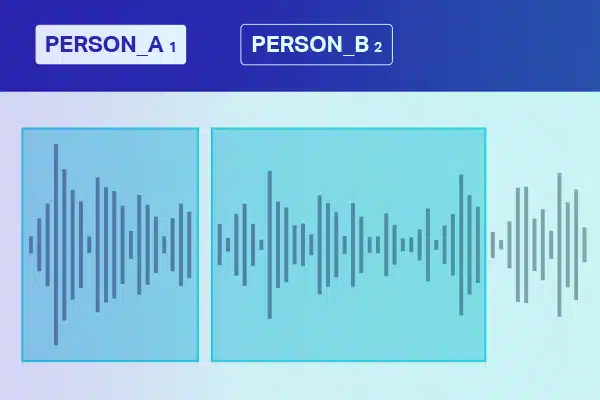
Audio Annotation
Leverage NLP expertise to annotate and label medical audio data accurately. Craft voice-assisted systems for seamless clinical operations and integrate AI into various voice-activated healthcare products. Enhance diagnostic precision with expert audio data curation.
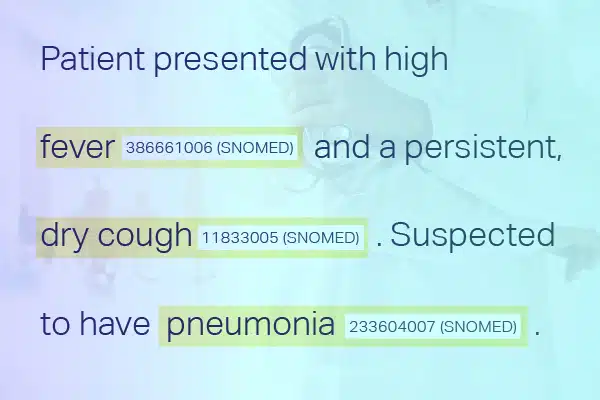
Medical Coding
Streamline medical documentation by converting it into universal codes with AI medical coding. Ensure accuracy, enhance billing efficiency, and support seamless healthcare service delivery with cutting-edge AI assistance in medical record coding.
Medical Annotation Process
Annotation process generally differs to a client’s requirement but it majorly involves:
Phase 1: Technical domain expertise (Understand scope & annotation guidelines)
Phase 2: Training appropriate resources for the project
Phase 3: Feedback cycle and QA of the annotated documents
Medical Annotation Use Cases
Advanced AI and ML algorithms are transforming healthcare by utilizing various medical processes. These cutting-edge technologies enable healthcare automation, leading to enhanced efficiency, precision, and patient care. To better understand their potential impact, let’s explore the following use cases:
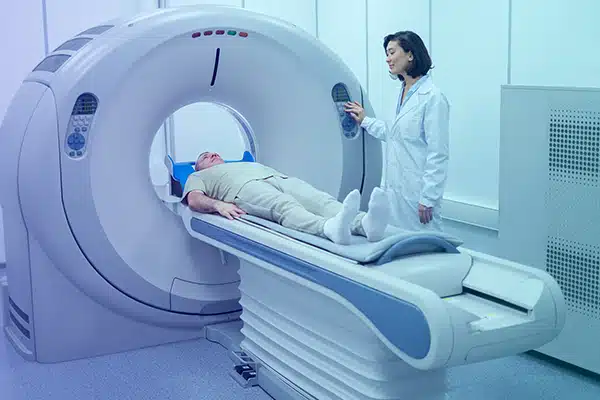
Radiology
Our radiology image annotation service sharpens AI diagnostics and includes an added layer of expertise. Each X-ray, MRI, and CT scan is meticulously labeled and reviewed by a subject matter expert. This extra step in training and reviewing boosts the AI's ability to spot abnormalities and diseases. It enhances accuracy before delivery to our clients.

Cardiology
Our cardiology-focused image annotation sharpens AI diagnostics. We bring in cardiology experts who label complex heart-related images and train our AI models. Before we send data to clients, these specialists review each image to ensure top-notch accuracy. This process empowers AI to detect heart conditions more precisely.

Dentistry
Our image annotation service in dentistry labels dental imagery to enhance AI diagnostic tools. By accurately identifying tooth decay, alignment issues, and other dental conditions, our SMEs empower AI to improve patient outcomes and support dentists in precise treatment planning and early detection.
Our Expertise
1. Clinical Entity Recognition/Annotation
A large amount of medical data and knowledge is available in the medical records mainly in an unstructured format. Medical entity Annotation enables us to convert unstructured data into a structured format.
2. Attribution Annotation
2.1 Medicine Attributes
Medications and their attributes are documented in almost every medical record, which is an important part of the clinical domain. We can identify and annotate the various attributes of medications according to guidelines.
2.2 Lab Data Attributes
Lab data is mostly accompanied by their attributes in a medical record. We can identify and annotate the various attributes of lab data according to guidelines.
2.3 Body Measurement Attributes
Body measurement is mostly accompanied by their attributes in a medical record. It mostly comprises of the vital signs. We can identify and annotate the various attributes of body measurement.
3. Oncology Specific NER Annotation
Along with generic medical NER annotation, we can also work on domain specific annotations like oncology, radiology, etc. Here are the oncology specific NER entities that can be anotated – Cancer problem, Histology, Cancer stage, TNM stage, Cancer grade, Dimension, Clinical status, Tumor marker test, Cancer medicine, Cancer surgery, Radiation, Gene studied, Variation code, Body site
4. Adverse Effect NER & Relationship Annotation
Along with identifying and annotating major clinical entities and relationships, we can also annotate the adverse effects of certain drugs or procedures. The scope is as follows: Labeling adverse effects and their causative agents. Assigning the relationship between the adverse effect and the cause of the effect.
5. Relationship Annotation
After identifying and annotating clinical entities, we also assign relevant relationship among the entities. Relationships may exist between two or more concepts.
6. Assertion Annotation
Along with identifying clinical entities and relationships, we can also assign the Status, Negation and Subject of the clinical entities.
7. Temporal Annotation
Annotating temporal entities from a medical record, helps in building a timeline of the patient’s journey. It provides reference and context to the date associated with a specific event. Here are the date entities – Diagnosis date, Procedure date, Medication start date, Medication end date, Radiation start date, Radiation end date, Date of admission, Date of discharge, Date of consultation, Note date, Onset.
8. Section Annotation
It refers to the process of systematically organizing, labeling, and categorizing different sections or parts of healthcare-related documents, images, or data i.e., annotation of relevant sections from the document and classification of the sections into their respective types. This helps in creating structured and easily accessible information, which can be used for various purposes such as clinical decision support, medical research, and healthcare data analysis.
9. ICD-10-CM & CPT Coding
Annotation of ICD-10-CM and CPT codes according to the guidelines. For each labeled medical code, the evidence (text snippets) that substantiate the labeling decision will be also annotated along with the code.
10. RXNORM Coding
Annotation of RXNORM codes according to the guidelines. For each labeled medical code, the evidence (text snippets) that substantiate the labeling decision will be also annotated along with the code.0
11. SNOMED Coding
Annotation of SNOMED codes according to the guidelines. For each labeled medical code, the evidence (text snippets) that substantiate the labeling decision will be also annotated along with the code.
12. UMLS Coding
Annotation of UMLS codes according to the guidelines. For each labeled medical code, the evidence (text snippets) that substantiate the labeling decision will be also annotated along with the code.
13. CT Scan
Our image annotation service specializes in CT scans for precise labeling for AI training with a keen focus on detailed anatomical structures. Subject matter experts not only review but also train on each image for top-notch accuracy. This meticulous process aids in the development of diagnostic tools.
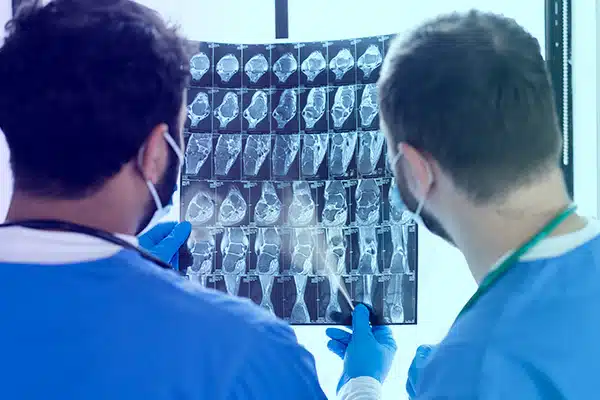

14. MRI
Our MRI image annotation service fine-tunes AI diagnostics. Our subject matter experts train and review each scan for utmost precision before delivery. We label MRI scans accurately to enhance AI model training. This process helps them pinpoint anomalies and structures. Boost accuracy in medical assessments and treatment plans with our services.
15. XRAY
X-ray image annotation sharpens AI diagnostics. Our experts label each image with care by pinpointing fractures and abnormalities accurately. They also train and review these labels for top accuracy before client delivery. Trust us to refine your AI and get better medical imaging analysis.

Success Stories
Clinical Insurance Annotation
The prior authorization process is key in connecting healthcare providers, payers and making sure treatments follow guidelines. Annotating medical records helped optimize this process. It matched documents to questions while following standards, improving client workflows.
Problem: Annotation of 6,000 medical cases had to be done within a strict timeline accurately, given healthcare data sensitivity. Strict adherence to updated clinical guidelines and privacy regulations like HIPAA was needed to ensure quality annotations and compliance.
Solution: We annotated over 6,000 medical cases, correlating medical documents with clinical questionnaires. This required meticulously linking evidence to responses while adhering to clinical guidelines. Key challenges addressed were tight deadlines for a large dataset and dealing with continuously evolving clinical standards.

Reasons to choose Shaip as your trustworthy Medical Annotation Partner
People
Dedicated and trained teams:
- 30,000+ collaborators for Data Creation, Labeling & QA
- Credentialed Project Management Team
- Experienced Product Development Team
- Talent Pool Sourcing & Onboarding Team
Process
Highest process efficiency is assured with:
- Robust 6 Sigma Stage-Gate Process
- A dedicated team of 6 Sigma black belts – Key process owners & Quality compliance
- Continuous Improvement & Feedback Loop
Platform
The patented platform offers benefits:
- Web-based end-to-end platform
- Impeccable Quality
- Faster TAT
- Seamless Delivery
Why Shaip?
Dedicate Team
It is estimated that data scientists spend over 80% of their time in data preparation. With outsourcing, your team can focus on the development of robust algorithms, leaving the tedious part of collecting the named entity recognition datasets to us.
Scalability
An average ML model would require collection and tagging large chunks of named datasets, which requires companies to pull in resources from other teams. With partners like us, we offer domain experts which can be easily scaled as your business grows.
Better Quality
Dedicated domain experts, who annotate day-in and day-out will – any day – do a superior job when compared to a team, that needs to accommodate annotation tasks in their busy schedules. Needless to say, it results in better output.
Operational Excellence
Our proven data quality assurance process, technology validations, and multiple stages of QA, helps us deliver best-in-class quality that ofen exceeds expectations.
Security with Privacy
We are certified for maintaining the highest standards of data security with privacy while working with our clients to ensure confidentiality
Competitive Pricing
As experts in curating, training, and managing teams of skilled workers, we can ensure projects are delivered within budget.
Recommended Resources
Blog
Named Entity Recognition (NER) – The Concept, Types
Named Entity Recognition (NER) helps you develop top-notch machine learning & NLP models. Learn NER use-cases, examples, & a lot more in this super-informative post.
Blog
5 Questions to Ask Before You Hire a Healthcare Labeling Co.
Quality training healthcare dataset improves the outcome of the AI-based medical model. But how to select the right healthcare data labeling services provider?
Blog
The Role Of Data Collection And Annotation In Healthcare
With data laying the foundation for healthcare, we need to understand its role, real-world implementations, & challenges. Read on to find out…
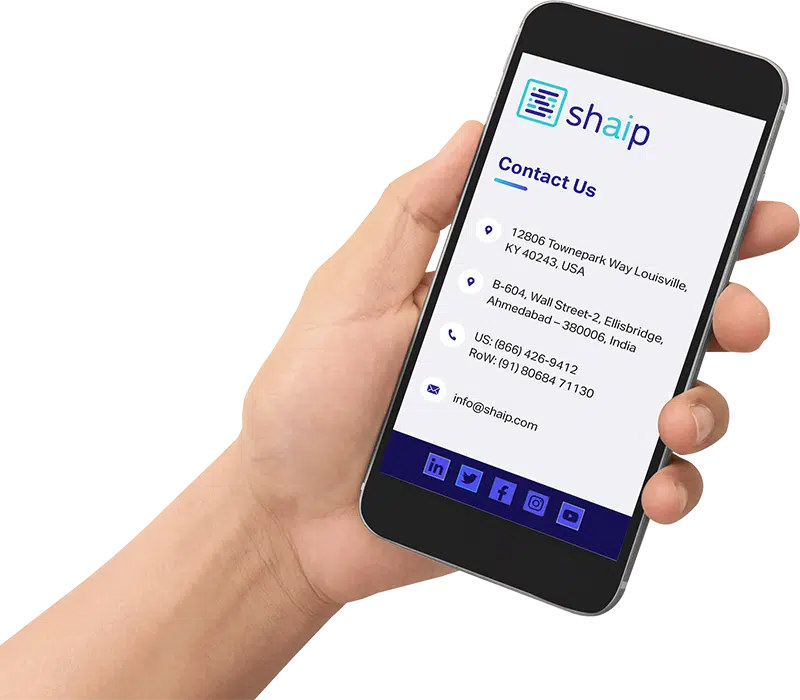
Looking for Healthcare Annotation Experts for complex projects?
Contact us now to learn how we can collect and annotate dataset for your unique AI/ML solution
Frequently Asked Questions (FAQ)
Named Entity Recognition is a part of Natural Language Processing. The primary objective of NER is to process structured and unstructured data and classify these named entities into predefined categories. Some common categories include name, location, company, time, monetary values, events, and more.
In a nutshell, NER deals with:
Named entity recognition/detection – Identifying a word or series of words in a document.
Named entity classification – Classifying every detected entity into predefined categories.
Natural Language processing helps develop intelligent machines capable of extracting meaning from speech and text. Machine Learning helps these intelligent systems continue learning by training on large amounts of natural language data sets. Generally, NLP consists of three major categories:
Understanding the structure and rules of the language – Syntax
Deriving the meaning of words, text, and speech and identifying their relationships – Semantics
Identifying and recognizing spoken words and transforming them into text – Speech
Some of the common examples of a predetermined entity categorization are:
Person: Michael Jackson, Oprah Winfrey, Barack Obama, Susan Sarandon
Location: Canada, Honolulu, Bangkok, Brazil, Cambridge
Organization: Samsung, Disney, Yale University, Google
Time: 15.35, 12 PM,
The different approaches to creating NER systems are:
Dictionary-based systems
Rule-based systems
Machine learning-based systems
Streamlined Customer Support
Efficient Human Resources
Simplified Content Classification
Optimizing Search Engines
Accurate Content recommendation
